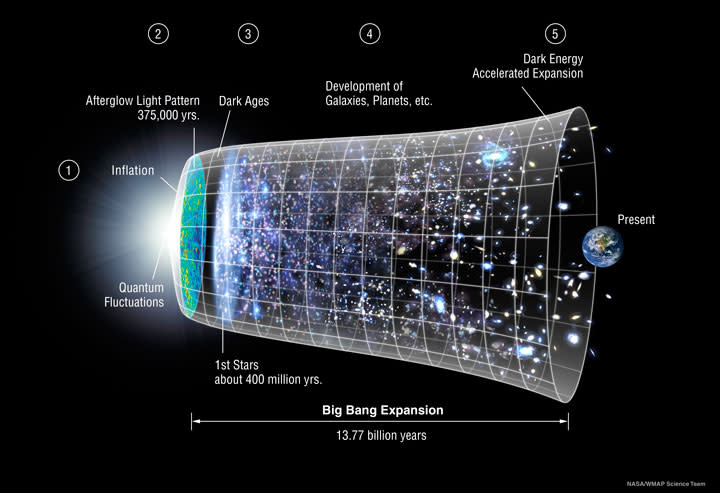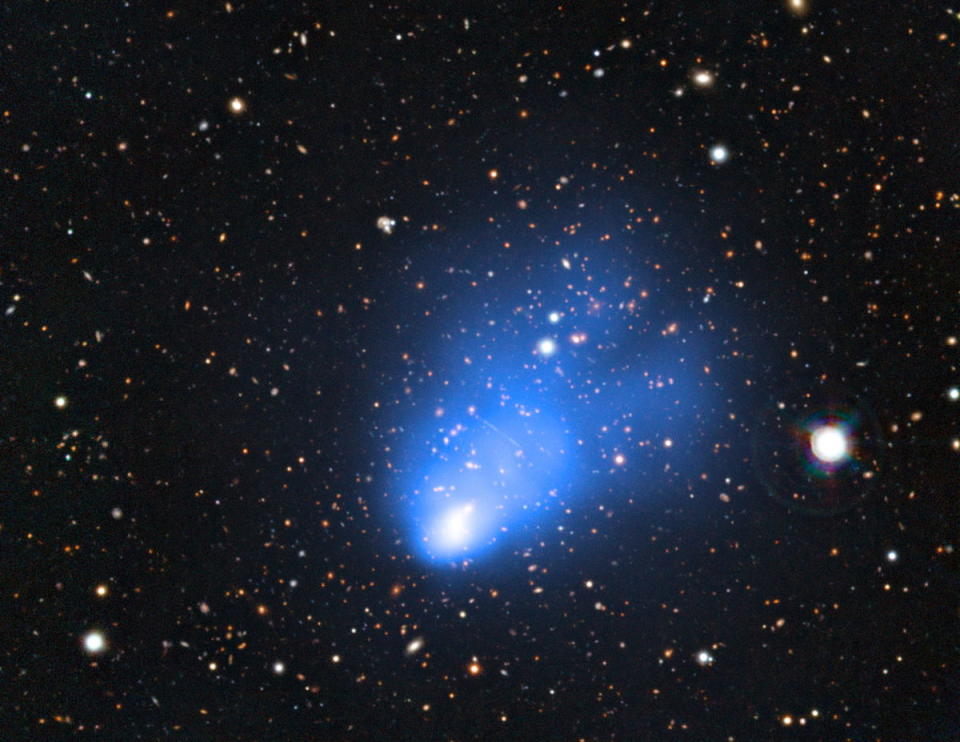The strange behavior of the massive merging galaxy cluster could be explained by the collision of dark matter, the universe’s most mysterious substance, with itself. However, the currently most favored model of cosmology is the cold dark matter (CDM) model, which posits that dark matter, which is virtually invisible because it does not interact with light, does not interact with itself.
To get to the bottom of this puzzle, researchers from the Astrophysics and Cosmology group of the Scuola Internazionale Superiore di Studi Avanzati (SISSA) in Italy began simulating what is happening inside the massive galactic cluster “El Gordo” (literally meaning “The Fat One”). ” in Spanish). It is located approximately 7 billion light years from Earth.
This simulation revealed that the physics of the supercluster of colliding galaxies, officially named ACT-CL J0102-4915, which has a mass equivalent to 3 million billion suns, can be explained by an alternative theory to CDM. This alternative theory is called the self-interacting dark matter (SIDM) model.
Relating to: Exotic ‘Einstein ring’ shows mysterious dark matter interacting with itself
As the name suggests, this model suggests that whatever dark matter is, matter can collide and interact with itself. If the universe is accurately described by a SIDM model, this means that dark matter particles can exchange energy with themselves.
A ‘fat’ dark matter laboratory
The fact that dark matter does not interact with light or visible matter gave scientists a clue that it could not be composed of atoms made up of electrons, protons and neutrons. These are the parts that make up stars, planets, moons and our bodies. These particles are collectively part of the baryon family, so everyday matter is technically called “baryonic matter.”
Dark matter interacts with gravity, so its effect on the fabric of space can affect baryonic visible matter and light. This is how scientists deduce the existence of dark matter. However, dark matter poses a big problem in terms of physics. Dark matter particles outnumber baryonic particles by at least 5 to 1 and possibly as much as 9 to 1; This means that what we see in the universe is only a small fraction of its true content.
“According to the currently accepted standard cosmological model, the current density of baryonic matter in the universe may account for only 10% of the total matter content. The remaining 90% is in the form of dark matter,” said team leader and SISSA scientist Riccardo Valdarnini. he said in a statement. “It is generally thought that this matter is non-baryonic and consists of cold, non-colliding particles that react only to gravity.
“But there are still a number of observations that are not explained using the standard model.”

El Gordo consists of two separate subsets of galaxies colliding at several million miles per hour. It is so far away that it appears as it did when the universe was less than half its current age. Valdarnini explained that large and massive structures such as El Gordo, discovered in 2012, provide excellent cosmic laboratories for examining potential SIDM models.
“These are huge clusters of galaxies, huge cosmic structures that at the time of collision determined the most energetic events since the Big Bang,” Valdarnini said. said. “El Gordo is one of the largest galaxy clusters we know of. El Gordo has been the subject of numerous studies, both theoretical and observational, due to its unique properties.”
A problem for the standard cosmology model
The CDM standard model of cosmology suggests that when galaxies in a cluster collide and merge, the gas component of such an event should behave differently than the dark matter component, dissipating as part of the energy initially released.
“Therefore, the peak of gas mass density after the collision will lag behind dark matter and galaxies,” Valdarnini said.
The SIDM model suggests that something different might have happened during these collisions. In this model, there would be a physical separation between points of maximum dark matter mass density, called “dark matter centres”, from other mass components of colliding galaxies. El Gordo’s observations show that this is exactly the signature of SIDM.


El Gordo consists of two large subsets of galaxies called the northwestern (NW) and southeastern (SE) galaxies, respectively. X-ray images of the entire colliding supercluster show a single X-ray peak in the SE subset and two faint, long tails extending beyond this peak.
A peculiar feature of these emissions is the variable peak positions of the different mass components. Unlike what is seen in another massive supercluster of colliding galaxies called the Bullet Cluster, El Gordo’s X-ray peak precedes the SE dark matter peak. In addition, the Brightest Cluster Galaxy (BCG) in El Gordo follows the X-ray peak and also appears to be offset from the SE’s center of mass. There are also strange features in the northwestern cluster of El Gordo. In this area, the peak density of galaxies is spatially offset from the corresponding mass peak.
To explain these features and potentially validate a SIDM model, Valdarnini and his team performed a large series of hydrodynamic simulations of El Gordo aimed at reproducing the observed properties of the massive supercluster.
“The most important result of this simulation study is that the relative separations observed between the different centers of mass of the ‘El Gordo’ cluster are naturally explained if dark matter is self-interacting,” he continued. “Therefore, these findings provide a definitive signature of dark matter behavior that exhibits very energetic, high-redshift collisional properties.” [very distant] cluster collision.”
RELATED STORIES
— There’s something ‘suspicious’ going on in the Milky Way’s dark matter halo
— How will the Large Hadron Collider’s successor hunt for the dark universe?
— Dark matter hanging from the cosmic web detected for the first time
However, the SISSM researcher also acknowledges that there are discrepancies between SIDM models and El Gordo observations and simulations, and that some measured values are higher than the model’s predicted upper limits for such cluster mergers.
“This suggests that current SIDM models should only be considered a low-order approximation and that the underlying physical processes describing the interaction of dark matter in large cluster mergers are more complex than can be adequately represented by the generally accepted approach to scattering of dark matter particles,” Valdarnini concluded. “The study makes a compelling case for the possibility of self-interacting dark matter between colliding clusters as an alternative to the standard collisionless dark matter paradigm.”
The team’s research was published in the journal Astronomy and Astrophysics in April.